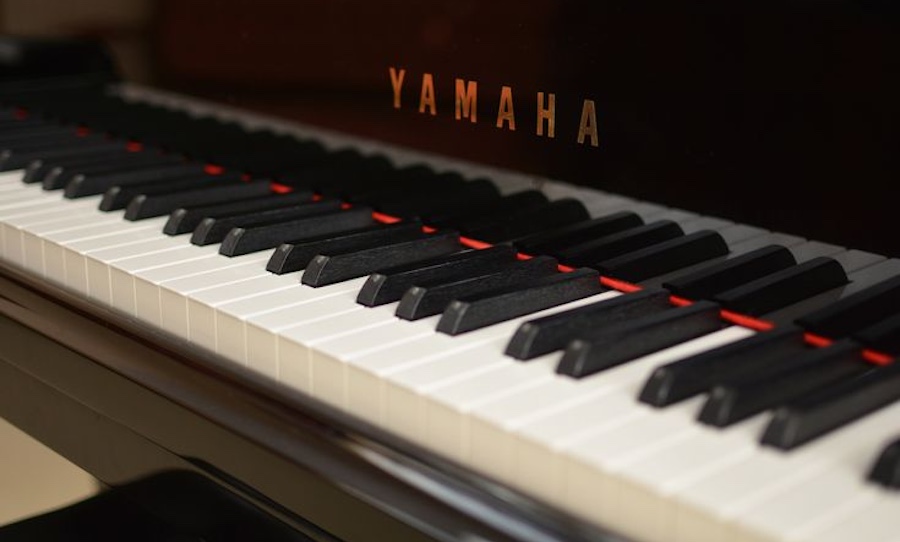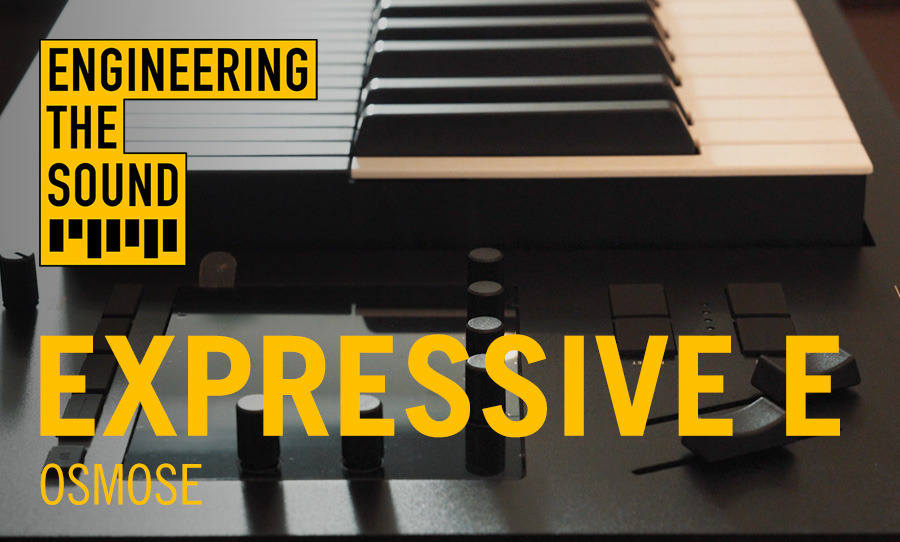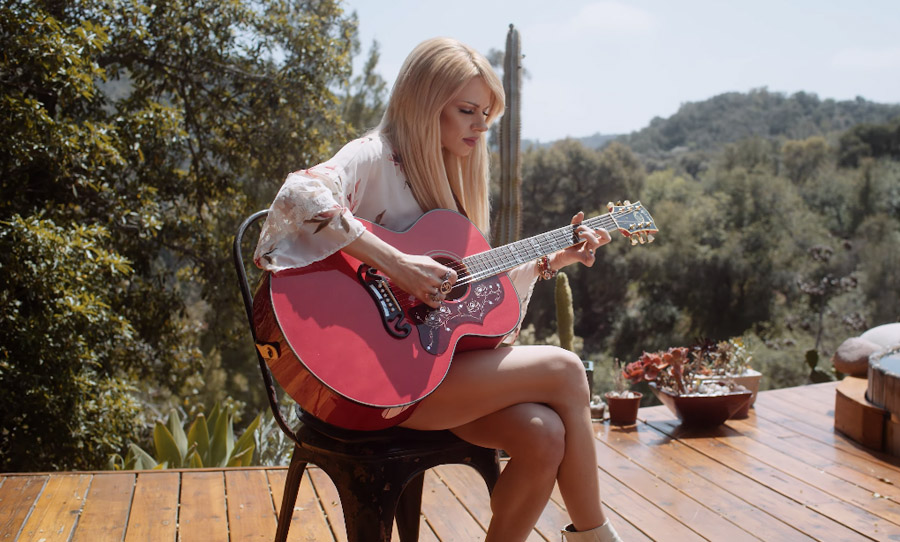With the DX7, Yamaha instigated a revolution that resulted in many casualties, but also a new understanding of what could be achieved by synthesis. Up until the advent of this digital instrument, popular synths and drum machines, save a few exceptions, lived in the analog domain.
Though the technique that brought this synth to life – frequency modulation (FM) – wasn’t exactly new at the time of the DX7’s introduction, it’s implementation brought a whole new sound to the tech-obsessed decade of the 1980s.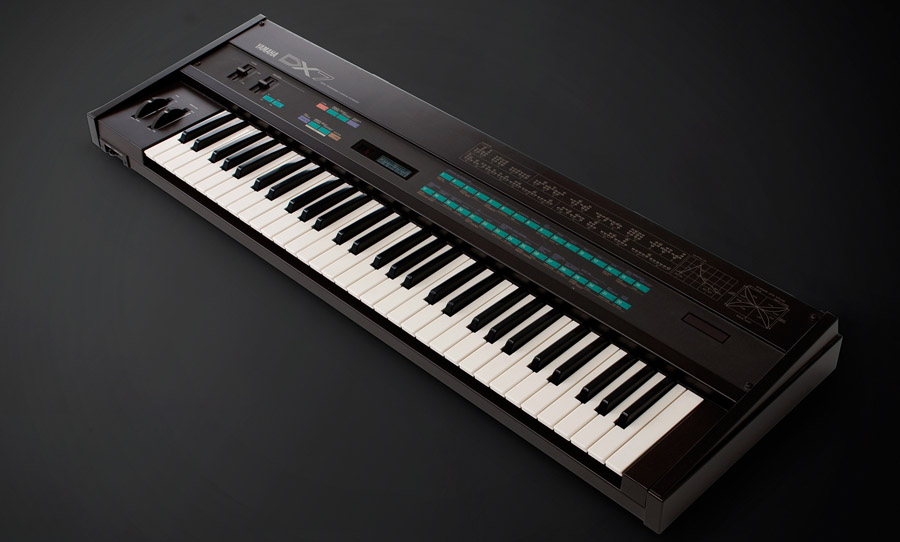
The Yamaha DX7 ushered in a new era of synthesis. Using digital technology, it revolutionised the synth industry, colouring the ’80s with unique FM tones.
A Surprisingly Old Technology
Many years before the release of this best-seller, frequency modulation synthesis came into being via the mind of John Chowning of Stanford University. In principle, it relies on two oscillators: a Carrier and a Modulator. The Carrier is related to the fundamental pitch of a signal, while the Modulator is used to change the Carrier signal.
Connecting oscillator, amplifier and envelope generator creates what Yamaha labelled an Operator. Operators can be connected in various ways to form an Algorithm. So when you consider that the DX7 had six Operators that could be hooked up in 32 different configurations, the sonic possibilities on offer were mind-boggling. In other words, analog synths didn’t really stand a chance.
Aside from the plethora of new sounds that could be conjured with this kind of sound generation, it could be done at a cheaper price compared to the premium analog products at the time. But the implementation of digital technology into synthesizers wasn’t all smooth sailing for Yamaha.
They introduced the GS-1 model two years before the DX7, but for a few key reasons, it was a commercial flop. Firstly, it was approximately the same size as a baby grand piano – and not much lighter. It featured a stunning 88-key weighted keyboard, but the sounds it could produce made it an ill-fitting instrument for a pianist. It wasn’t all bad news though – many of the sounds that would go on to be integral to the DX7 were first honed in this lumbering beast.
At the time of the DX7’s release in 1983, lighter, portable and more robust keyboards were taking over the synth market. Despite being analog, Roland’s Juno series began to set the tone for the ’80s in terms of form factor. Roland’s more affordable analog options were able to be efficiently mass-produced, were already eating into the market occupied by the likes of Moog and ARP. When the DX7 came along, it basically killed off the high-cost offerings from the States.
A Perfect Storm
By the early ’80s, the instrument and recording industries were in the midst of a digital revolution. Digital effects were finding there way into the top studios, digital sampling had made an impact at the top end of the instrument market (see the Fairlight CMI and the Linn LM-1). Musicians were at the cutting edge of the new technology and were primed for an affordable instrument that would infuse their sounds with icy freshness. The DX7 was in just the right place to catch that wave.
If musicians were well-heeled enough to experiment with the analog synths that had been developing through the ’70s, they would have grown accustomed to the warm, fuzzy and thick sounds that were on offer. These kind of nostalgic warbles are of course key current analog revival.
But like a sheet of crystalline glass, the DX7 cut through the forgiving beds of brassy pads, bringing icy, ethereal and metallic tones to a new era.
Up until this point in time, there wasn’t really any mass market for synthesizers to speak of. The Minimoog, for example – a beacon of keyboard-based synth excellence and revered to this day – only sold around 12,000 units in 12 years of production. Within a year of its debut, the Yamaha DX7 garnered more than 150,000 orders. The synth had gone global.
Not for Control Freaks
Counterintuitively perhaps, one of the DX7’s key limitations could have been the very key to its success. Specs-wise it was a powerful instrument – with 16 voices, it is an incredibly lush polysynth. It was, however, a devil to program. It’s monochromatic face, populated with teal buttons and a tiny LCD didn’t offer up the friendliest environment for customisation.
Due to the difficulties involved in programming the DX7, the factory patches were often left unchanged. Producers of hit songs in the ’80s would simply go to the fattest bass preset, modulated guitar sound, tribal flute and so on. Selling a synth in which in any beginner could instantly zero in the most famous songs of the era was a fantastic selling point.
Though the original DX7s can be found quite easily, Yamaha have seen fit to revive the game-changing synth with the Reface DX. With this new version the size is significantly reduced, editing is mercifully easier, with multi-touch controls and an integrated looper.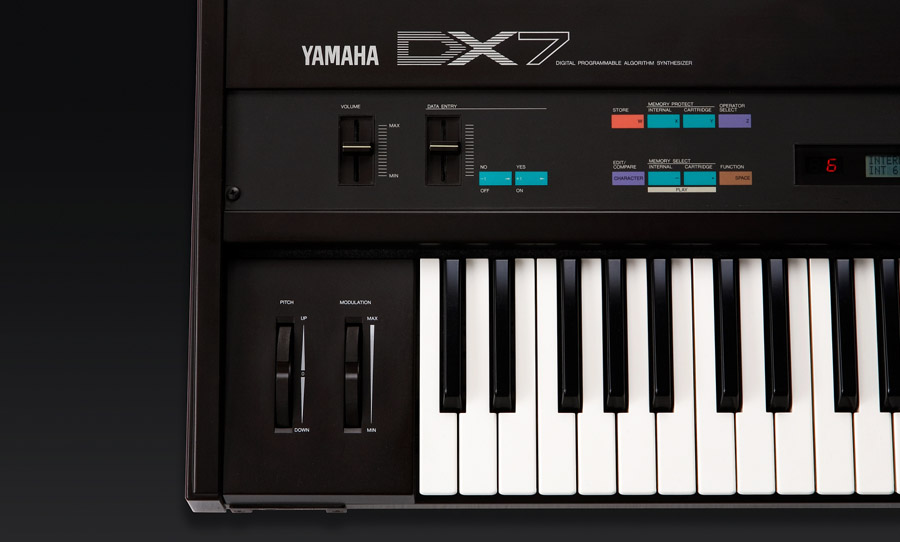
It’s no mystery that Yamaha DX7 continues to thrive. There are more capable and user-friendly synths that exist, but it’s debut at the perfect point in history, its sonic diversity and unprecedented popularity is key to its immortal status.
